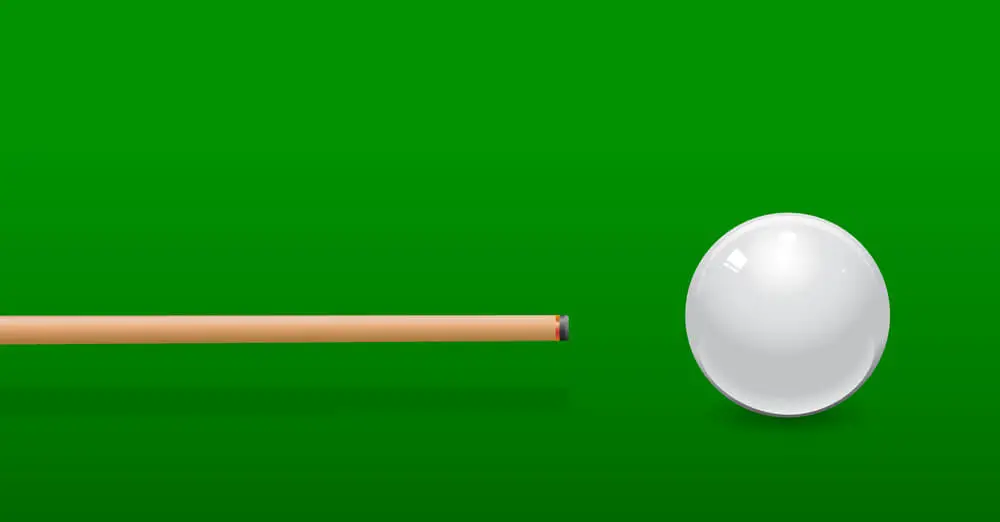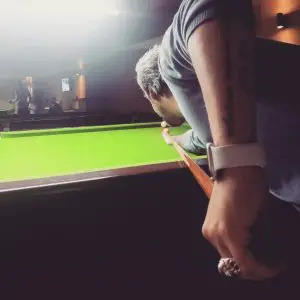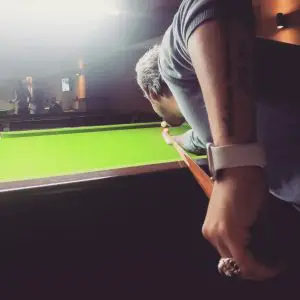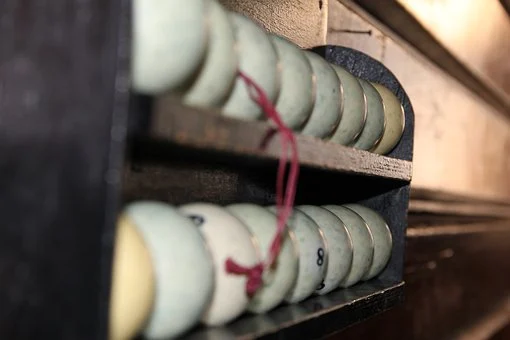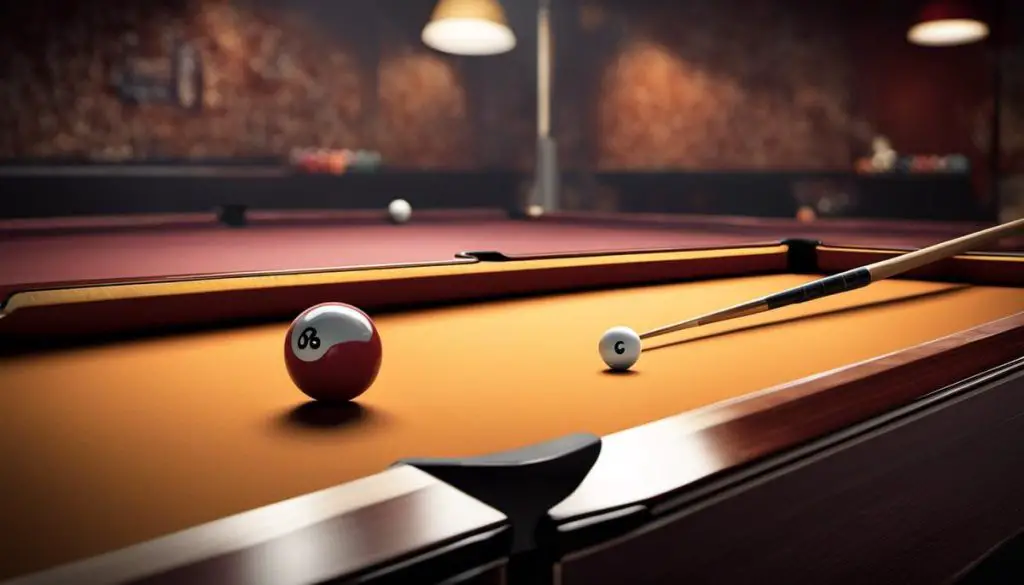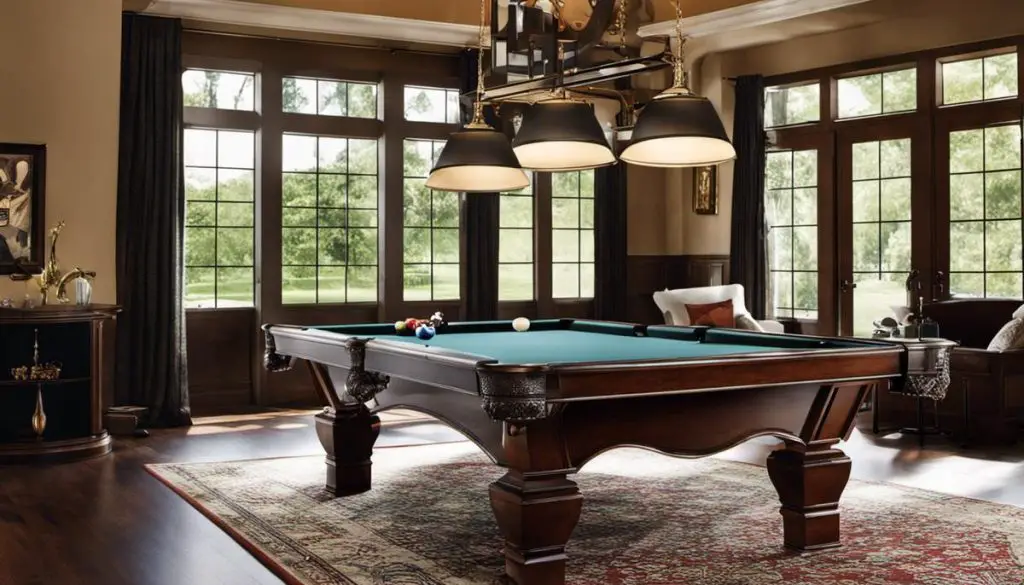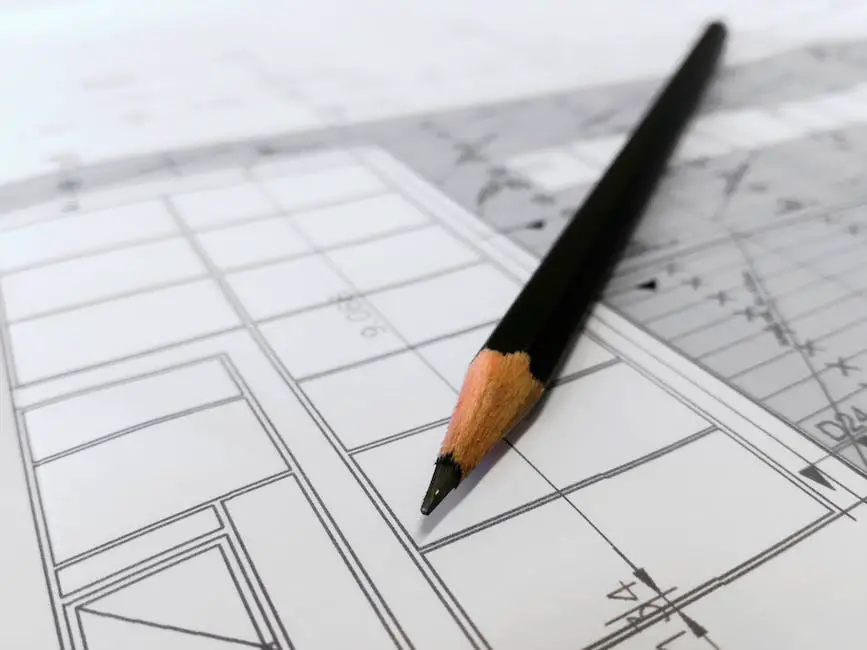You took a long time to decide which was the best pool cue for you. After debuting your new cue at the billiards hall, your buddies recommended shaping the tip for better accuracy. You’d like to shape your pool cue tip, but you don’t know where to start. How do you do it?
You can shape a pool cue tip with sandpaper, or–for less effort–a cue tip shaper. If you’re going the sandpaper route, you rub the paper over the pool cue at 50-degree angles. Using a pool shaper is easier and involves rolling the cue in the shaper.
In this article, we’ll tell you everything you need to know about shaping a pool cue tip, from the shape you need to the tools to do it. We’ll even further expound on the benefits so you’re always inclined to keep your pool cue tip the right shape!
What Shape Should a Pool Cue Tip Be?
Unless you just did it, then you’ll certainly want to shape your pool cue tip, but what kind of shape should you choose? Most billiards enthusiasts select between one of two radii, either that of a nickel or a dime. Yes, you use good, old-fashioned American currency as your basis.
Depending on which coin you choose to shape your pool cue tip, the sizing will be different. Let’s talk more about this now.
Dime Shape
Dimes are smaller and thinner than nickels. An average dime is 17.91 millimeters in diameter, which is 0.705 inches according to the US Mint. The coin is 1.35 millimeters thick with reeded edges and a weight of 2.268 grams.
The precision you get with a pool cue tip matched to a dime’s radius is going to lead to more spin whenever you hit a ball. Since there’s less to your pool cue tip, the contact point between your pool cue and the ball is naturally a lot smaller. You must be a pretty accurate player to win a game of pool with a dime-shaped cue tip.
Efren Reyes, a Filipino pool player with more than 70 titles to his name, supposedly likes to shape his pool cue with the dime radius in mind.
Nickel Shape
The nickel radius, given the size of a nickel, produces a slightly bigger diameter than using a dime. Per US Mint numbers, nickels are 0.835 inches in diameter or 21.21 millimeters. Each one is 1.95 millimeters thick and weighs 5.000 grams.
The versatility of a nickel radius is one reason pool players select it. If you’re new to the game and you need a more forgiving pool cue tip, the nickel shape is it. That’s due to how the sweet spot afforded to you is a lot bigger.
Shane Van Boening, a famous pool player from South Dakota, always shapes his pool cue tip using a nickel.
How to Choose the Pool Cue Tip Shape
It’s decision time. How do you pick between the dime and nickel radius? For one, look at the size of your pool cue tip. Is the tip already pretty small to begin with? Then using a nickel to shape the cue tip won’t work as well as a dime.
You should also consider your level of experience when determining which coin to use. Remember, the dime-shaped tip has much less of a contact point than a cue tip with a nickel shape. If you’re still getting the basics of pool down, you can make learning a lot more difficult for yourself with a dime-shaped tip. While yes, you’ll become a more accurate player this way, it’s sort of trial by fire and thus not highly recommended.
We would suggest playing with both a nickel-shaped and dime-shaped pool cue tip to get a feel for them both. If you can, borrow a buddy’s pool cue or go to your local pool hall and use two different types of cues.
You may find that you like the feel of a dime-shaped cue tip more even though nickel-shaped tips are more forgiving. It could also be the opposite, where a cue tip with a nickel radius works for you. There’s no wrong answer here, so choose whichever shape feels best.
How to Shape a Pool Cue Tip Step by Step
Once you’re confident in your decision on how you’ll shape your pool cue tip, it’s time to get to work. As we mentioned in the intro, you have two avenues for shaping the cue: sandpaper or a pool cue tip sharpener. We’ll go over the instructions for both shaping methods, as you may have to rely on one over the other at times.
Sandpaper Method
Chances are, you have some sandpaper lying around the house or in your garage. Make sure it’s unused for best results. You’ll also need some masking tape or painter’s tape and possibly an empty toilet paper tube. Then you’re ready to follow these steps.
Step 1: Since rubbing with sandpaper can get quite vigorous, you want to protect the ferrule of your pool cue. Damaging this part of the cue will require you to chain it, which can be complicated for a beginner pool player.
Cover the ferrule in masking tape or painter’s tape. If your ferrule is especially nice, we’d recommend the painter’s tape since it might come off with less sticky tape residue than masking tape.
Step 2: If your sandpaper is already rolled up, then it’s ready to use. If the piece of sandpaper is flat, then wrap it around an empty toilet paper tube so it’s sandpaper-side in. You can use a bit of masking tape to secure the sandpaper around the tube if need be.
Step 3: Slip your pool cue inside the toilet paper tube and begin rubbing the sandpaper over the cue tip. Alternately, you can curl a piece of sandpaper in your palm and rub that way, but wear gloves so you don’t accidentally hurt your hand with the friction of the sandpaper.
As you rub the sandpaper over the cue tip, make sure you’re doing so in only a single direction. You should rub the sandpaper from the bottom of the tip to its top. Angle the sandpaper to roughly 50 degrees as well.
Step 4: Shape the pool cue tip, but please take your time as you do so. You can always do a bit more whittling to get the shape right, but you can’t take the removed bits and reattach them to the tip. Rubbing away too much of the tip might render your pool cue unusable.
Pool Cue Tip Shaper Method
What many pool players use is a tip shaper such as this one from Willard on Amazon. That shaper produces a cue tip with a dime radius, but you can also buy shapers with a nickel radius if that’s what you prefer.
All pool cue tip shapers should look have a bowl-like depression in which your cue tip goes. Within that bowl is scoring abrasive paper, which is like sandpaper but not quite.
So how do you use your shaper? It’s simple, just follow these steps!
Step 1: Put your pool cue tip shaper on the floor. It should be upward so that the depression with the abrasive surface is facing you.
Step 2: Grab your pool cue and aim it so its tip is down towards the shaper. The tip should fit into the depression with room to spare depending on the style of shaper you buy.
Step 3: Holding firmly onto your pool cue, begin rolling it rapidly in your palms. It takes a few minutes to shape the cue tip, which is no different than using sandpaper, but the results tend to be more accurate.
If you’d rather not stand up and roll your pool cue that way, you can also hold the shaper in one open palm, grasp the pool cue in your other hand, and roll the tip. This lets you brace the pool cue on your leg, which some beginners might find easier.
Here’s a YouTube video illustrating that method.
What Is the Benefit of Shaping Your Pool Cue Tip?
Is it really necessary for you to shape your pool cue tip at all? Absolutely. Like anything that you use often enough, the cue tip can sustain wear and tear that causes it to work less efficiently. By reshaping the tip, you can enjoy the following benefits again.
Better Accuracy
Lining up for a successful shot in pool is partially about your stance, yes, but your pool cue tip also plays a big role in how accurate your shot will be. A reshaped tip will be on-point, especially a nickel-shaped tip. Remember that you can be a more accurate player with a dime-shaped cue tip too, but that’s more on you since this shape is less forgiving.
More Consistency
It’s one thing to make an accurate shot once or twice throughout the night, but you want consistency too. A weathered pool cue tip might create discrepancies from shot to shot. This can skew your score and lead to a loss even though you were doing really well for a while. Make sure you reshape your pool cue tip!
Cue Ball Control
You need to be able to manage the cue ball if you want any chance of victory in pool. Accuracy and consistency will definitely help, which is another reason why shaping your pool cue tip is within your best interest.
How Often Should You Shape Your Pool Cue Tip?
Through the information in this article, you decided your pool cue tip was in need of reshaping. Whether you went for the ultra-precise dime shape or the bigger nickel shape, you’ve noticed that you’re playing better.
You want to make shaping the tip a regular part of your routine, but how often do you need to do it? Well, it depends on a few factors.
For one, did you spend a lot of money on your pool cue? If you did, more than likely, the tip is made of a tough, durable, hard material that’s designed to last. In such a case, you might reshape the tip after you buy the pool cue, but you very well may not have to do so again. With a softer tip, more frequent reshaping will be necessary.
Second, how often do you play? If you’re at the pool hall every week with your buddies, then you’ll wear down the current shape of your pool cue a lot faster than if you’re a more sporadic monthly player.
The rule of thumb is that, if it’s been about a month, you probably need to reshape your pool cue tip.
Conclusion
Pool cue tips benefit from being reshaped. You might opt for the slimmer and more streamlined dime radius or the larger nickel radius. The former requires more skill and accuracy on your part while the latter does not.
Whether you’d rather shape your cue tip with sandpaper or a shaper, now you have all the info you need to get a great tip shape every time!

